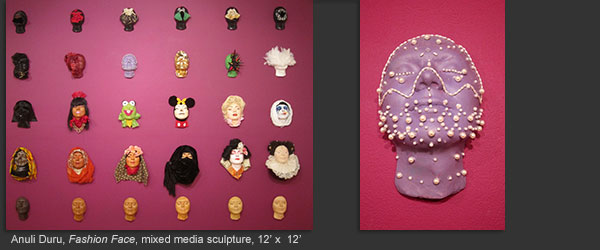
From traditional African attire to Chinese dress, to European Runway Couture, the way in which fabric is manipulated has shaped the perception of the self and formed statues of identity. Whether it is the type of material, the availability, or the quality, the ways in which we fashion these elements into clothing have come to define and almost speak for the human condition. Fashion can indicate not only a sense of cultural and ethnic identity but it can also speak of our age, our social class. It can characterize our emotions, and it can even project a kind of societal image or personality overtop our own individual personalities. The power in fashion is undeniable: it defines so much of who we are, sometimes even before we have a chance to do that for ourselves.
The thirty some faces on the wall represent the transformation of identity and how, as we grow and develop in our society, we begin to lose our originality as it is masked by culture, pop culture, materialism, and even by the clothes we wear. We arrive into this world completely nude, untouched, and original as represented by the bottom row of faces in the 6 different skin colors. Yet as we develop within our culture, we assume ethnic and cultural identities as represented by the next row. The third row projects how our identities are then transformed by media and pop culture. And from pop culture and societal influences, we learn to become material orientated, thus we are further transformed by accessories, trends, and materials. Eventually, we become so entangled with societal influences that our identities become like materials and the clothing we wear—always changing and always transforming us.